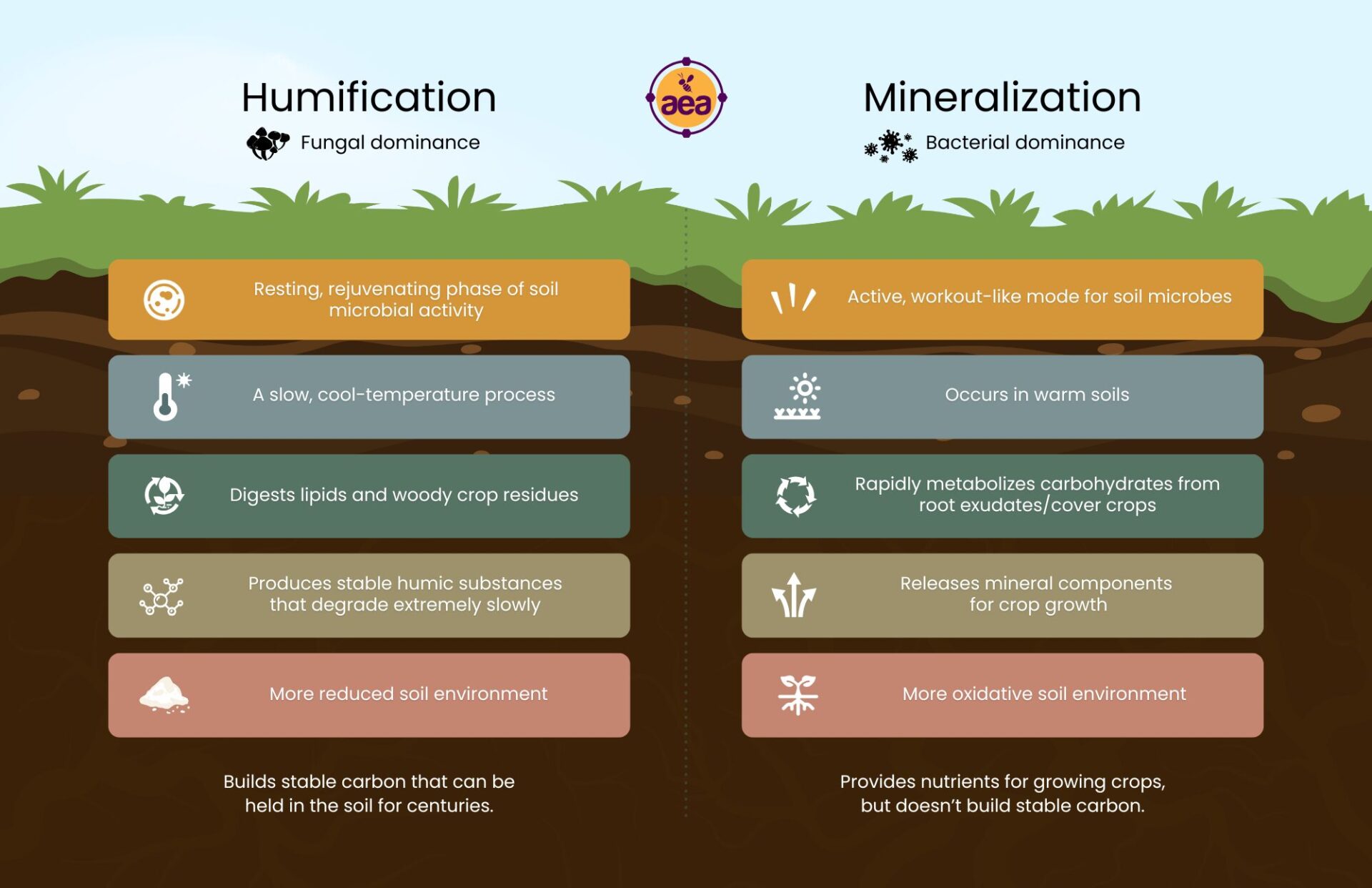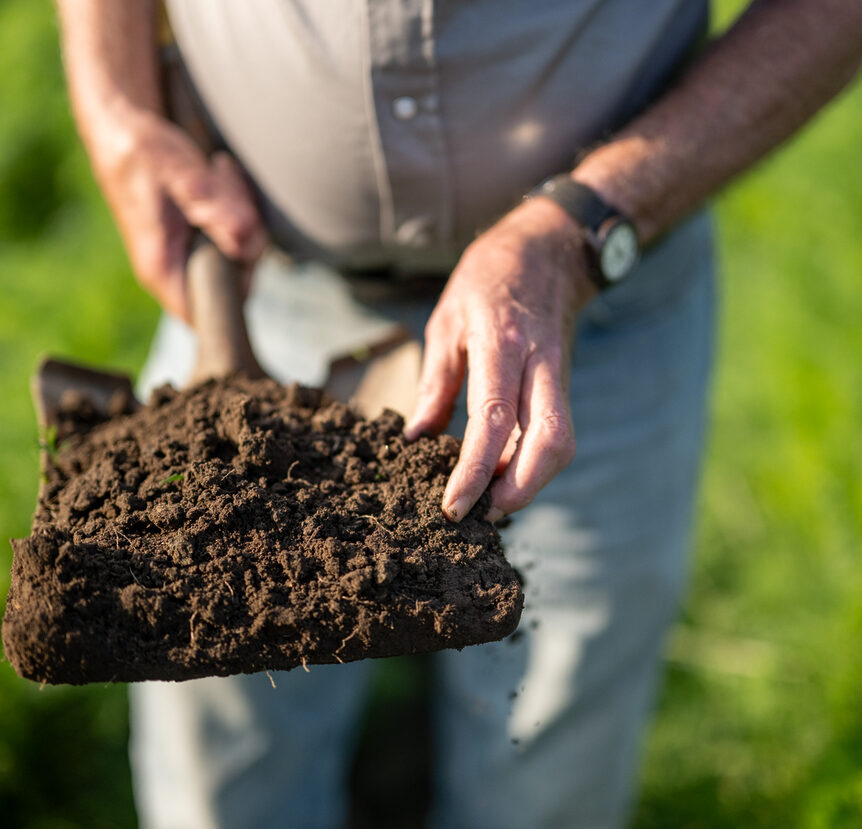Farming is often seen as an extractive process, depleting nutrient reserves from the soil with every harvest. However, we must understand that thriving plants have the ability to harness an incredible amount of energy from sunlight and produce more sugar than they need to survive. Plants send surplus sugar out of their roots and feed it to the microbial communities in the root zone. These root exudates are the fastest way to build organic matter and increase nutrient availability. This is how we can grow profitable crops and regenerate the soil at the same time. Most current crops are well below this level and are barely surviving. Doubt this? Take a look at how many pesticides are needed to keep them alive. With thriving, biologically active soils, we can grow extremely healthy plants.
To reach such levels of soil health, it’s important to understand the two main type of microbial activity that occur on the soil: humification and mineralization.

Humification vs. Mineralization
Humification:
- Is the resting, rejuvenating phase of soil microbial activity
- Is a slow, cool-temperature process
- Is fungi-dominant
- Digests lipids and woody crop residues
- Results in stable humic substances that cannot be further degraded
- More reduced soil environment
The long-chain carbon structures formed during humification are what transform dirt into fertile soil.
Microbial mineralization:
- Is like workout mode for soil microbes
- Occurs in warm soils
- Is bacterially-dominant
- Rapidly metabolizes carbohydrates from root exudates or green organic materials such as green cover crops
- Releases mineral components for crop growth
- More oxidative soil environment
Mineralization provides nutrients for growing crops but doesn’t add stable carbon to the soil like humification.
The Regenerative Soil Primer
Applying AEA’s Regenerative Soil Primer after harvest:
- Can maximize the soil’s nutrient reserves
- Provides a period of many months for microbes to multiply and digest crop residue
- Gives the microbes a break from the disruptions of tillage, compaction, or herbicides.
- Allows for humification during the cold time of year.
As spring approaches and temperatures rise, the soil shifts from fungal humification to bacterial mineralization. The long-chain carbon structures built during humification provide an energy source for the crops. This transition increases not only macronutrients like nitrogen and phosphorus but all the mineral nutrients that add value to your farming operation.
Whether your goal is to boost microbial populations, enhance crop residue digestion, or reduce the risk of overwintering diseases, applying Regenerative Soil Primer can help unlock the nutrients necessary for crop quality and disease resistance. Adding BioCoat Gold to your application will promote early seedling health, root system development, and overall stand vigor for fall-planted cover crops and cereal grains.
The Products
AEA’s Regenerative Soil Primer is a trio of products that can be tank-mixed as a single application to keep your soil teeming with biological activity. Here’s what each product brings to the table:
- Rejuvenate™: Provides long-lasting support for a successful inoculation event and ongoing energy for microbes in various conditions.
- SeaShield™: Offers amino acid nitrogen support for the growth of beneficial fungal populations, often lacking in farmed soils, contributing significantly to fertility cycling.
- Spectrum™: Enhances and restores beneficial soil microbe populations, augmenting the natural mineralization processes occurring in healthy soils.
Subscribe to our Blog.
You'll get each post to your inbox (~1x/week).
You may unsubscribe at any time. We value your personal information. Here's our Privacy Policy.
"*" indicates required fields


